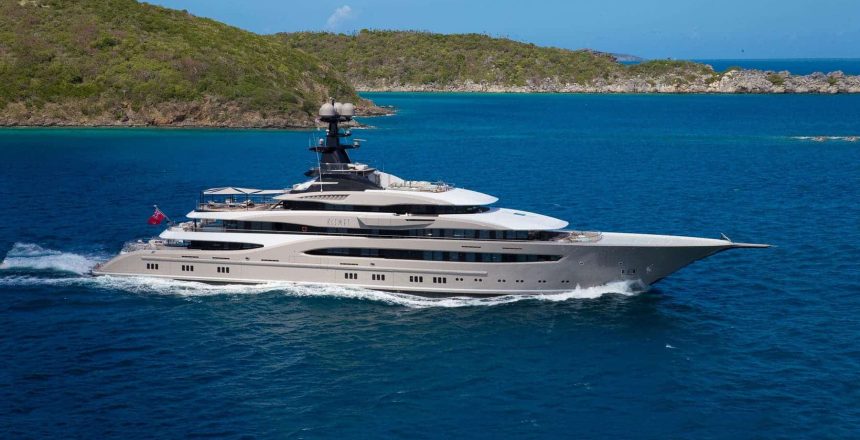Finding the right yacht for you can be a long process and search, depending on the relevant criteria and the demand of the market. So after all of the searching and visits which you or your broker have encountered, what happens when you have found the right yacht?
Below is a brief guide and insight into the purchase process of a yacht once you are satisfied the right yacht has been chosen.

Agree a sales price
Before any documentation is drawn up, the first hurdle to overcome is to agree a sales price between you (the buyer) and the seller and to submit a formal offer to purchase the yacht with a Letter of Intent (LOI).
As with any negotiation, it’s not untypical for the seller to put forward a counter offer and hence beginning the negotiations. Once a sales price has been agreed, both parties move forward to implement a signed Memorandum of Agreement (MOA).
Memorandum of Agreement
Upon agreeing a sales price an MOA is signed by both parties, the most common form being from the Mediterranean Yacht Brokers Association (MYBA). The MOA should be circulated for signature and once signed by both parties the agreement is in place

Upon signature of the MOA a deposit of 10 percent of the agreed sales price is payable into the approved stakeholder account and held subject to the terms of the MOA.
Additionally, once the MOA has been signed the seller will need to arrange a full inventory within 7 days. The inventory, once agreed, will be signed and form part of the MOA contract, so that all the items (onboard and ashore) are included in the sale.
Sea trial
The first stage of the MOA is to sea trial the vessel and the seller must make the vessel available to the buyer for this.

Once the sea trial has been conducted, the buyer must choose to accept / reject the vessel following this sea trial by written confirmation with 24 hours (or prior to placing the vessel ashore for a condition survey – whichever is sooner). If the vessel is rejected by the buyer, the deposit is refunded immediately. If the vessel is accepted, the buyer proceeds to survey the yacht.
Condition survey
The next stage is the condition survey of which the costs are borne by the buyer. The survey is started as soon as possible after the sea trial and completed before the date outlined in the MOA.
Following the completion of the survey a report is produced and sent to the buyer, after which they must decide whether to accept the condition of the yacht or whether to reject the yacht because of defects that have been discovered during the survey.
The buyer can as per the MOA;
- Give written acceptance of the vessel
- Give written notice requiring the Seller to make good defects or make a reduction in sales price, which could result in an extended completion date.
- Give written notice of rejection of the vessel specifying defect (a defect is something than an officially appointed marine surveyor shall have certified to affect the operational integrity of the vessel/machinery/systems or renders her unseaworthy).
If there are valid defects, the seller can either choose to repair these defects at his or her cost; or discount the price of the vessel accordingly to cover the costs of repairing these defects; or decide to not continue with the sale of the vessel.
If the vessel is accepted by the buyer following the survey, or an agreement is reached with regards to any defects found, then the next step is to prepare all the documentation ready for the completion date.
Moving to completion
Once a price has been negotiated, sea trials and surveys have been conducted and accepted, we are 90 percent there. The hard work on the buyers front is pretty much over and all that is left is for the buyers broker to make sure every documentation is in place to enable the buyer to take ownership of the vessel.
In this final stage, your broker will be checking all the requirements of the Flag State (Flag) and Classification Society (Class) to complete the sale. They will also be investigating insurance requirements needed to take ownership and for handover.
Completion involves signing the bill of sale and handing over all valid original documents (provided by the seller), in exchange for the balance transfer of funds (provided by the buyer).
Completion also involves making sure that the captain has all the necessary original documents of the yacht on board, ready to be presented to the buyer’s representative at completion.
Once all the documents are in order, simultaneously the balance of the purchase price is transferred to the seller, the protocol of delivery is then signed by both buyer’s and seller’s representatives onboard the yacht. It states the time and place of the transaction and the current condition and position of the vessel. Position is important as it would determine any potential tax application of the transaction.
Salt Superyachts will then conclude with Flag and Class documentation requirements including issue of new registration with the new owners name and address.
Enjoying your new yacht
And there we have it, after what could have been weeks, months or years of searching you can finally take ownership of your new superyacht! The deal is now complete and celebrations can now begin!
SALT Superyachts – Your Trusted Partner For Your Superyacht Journey. Offering you an unbiased and comprehensive yacht charter consultancy. www.salt-superyachts.com hello@salt-superyachts.com
+44 2038 821 364
